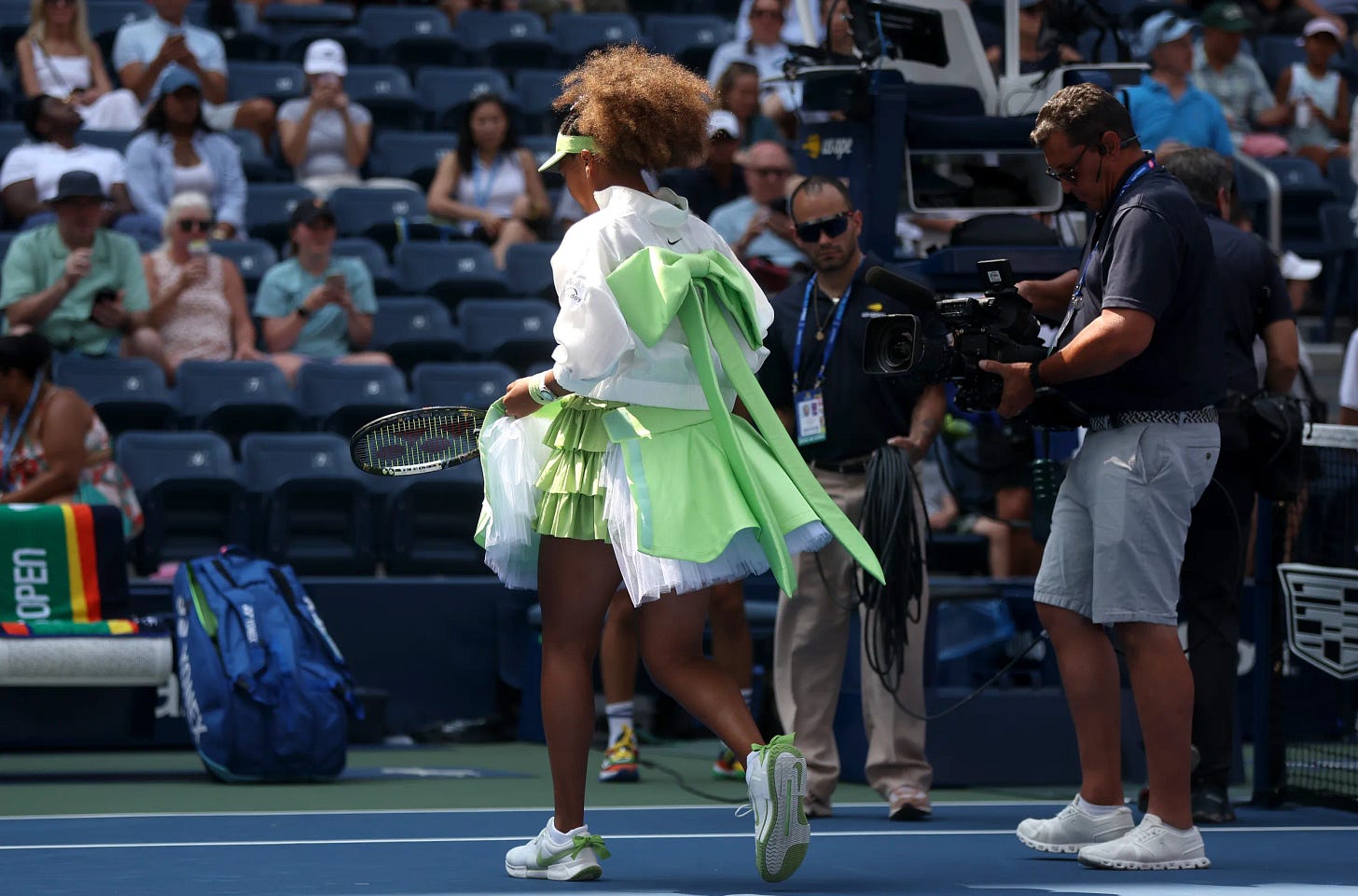Coquette Claims the Court
Naomi Osaka's US Open outfit is a stylistic reflection of what it means to be a female athlete
Naomi Osaka’s performances at this year’s US Open will soon be forgotten, but her performance wear most certainly will not be. The four-time Grand Slam winner was unfortunately knocked out of the tournament in the second round, allowing spectators only two opportunities to view her custom look, made by Nike and designer Yoon Ahn. Adorned with bows, ribbons, frills, and tulle, Ahn—the founder and creative director of AMBUSH—described it as “Lolita goth” (“Lolita,” in this case, references the Japanese subculture inspired by Victorian fashion, not the 1955 novel by Vladimir Nabokov) in an interview with The New York Times.
“I wouldn’t automatically associate myself with being girlish when I’m on the court,” Osaka said. “But I tend to gravitate toward really beautiful and cute things. I think there’s something quite cool in making that an emphasis, especially here in New York. In New York, the tennis court is more like a stage.”
The bows are at the center of the couture look—her shoes feature two tiny bows, ruffles on her dress are adorned with bows, as well as her custom headphones, and her warm up jacket is a vessel for an unmissable, massive satin bow. Two versions of the outfit were made; a lime green iteration for daytime matches, and a black one for nighttime matches. Each version was worn only once, as Osaka bowed out of the tournament earlier than she had hoped.
According to Ahn, the process of designing the viral looks began with a very simple question: “What are you into right now?” Osaka responded with references to several Japanese subcultures and characters, including the iconic (and also bow-adorned) Sailor Moon. She heavily emphasized the Lolita goth aesthetic—a cutesy, anime-inspired style of dressing that was popularized in 1990s Japan but has maintained a dedicated contingent of dressers today. “They go out and wear pink, frills, bows, lace,” Ahn told The New York Times. “It’s really about owning the cutesy-ness and the girly-hood.”
Her night-and-day looks are an unashamedly feminine take on tennis-core, and one that is true to Osaka’s wholistic presence as a tennis player, female athlete, and new mother. It brought the coquette trend to the courts of Arthur Ashe Stadium; a venue that has largely placed an emphasis on function over form when it comes to apparel.
“Tennis clothes don’t have to just look like tennis clothes,” said Osaka.
While many are quick to reduce the coquette aesthetic to only the color pink, bows, pearls, and daintiness (which isn’t wrong, per se), Osaka embodies an oft-forgotten, yet crucial, facet of the trend—the power of womanhood and the reclamation of autonomy from the male gaze. Bows are a but a symbol of the coquette aesthetic, a simplistic summary of the trend’s emphasis on femininity and beauty. In this vacuum—which is often affirmed on social media—the aesthetic can often appear as shallow and exclusionary.
But Naomi Osaka is the best version of coquette-ness. In her case, all of the seemingly “frou-frou” accessories are really a stylistic reminder that she is more than just an athlete, and her on-court outfits don’t have to reduce her to that alone. To Osaka, her US Open look is best described by a term other than “coquette” or “Lolita goth.”
“The inspiration that fueled the look for me — and this might be a Japanese term — is feeling like a ‘magical girl’ on the court,” Osaka said in a press release. “There’s a moment of transformation for me when I walk onto the court, and I have a lot of fun playing, so wanting everyone who sees the outfit to connect with that feeling is a really big motivation for me.”






